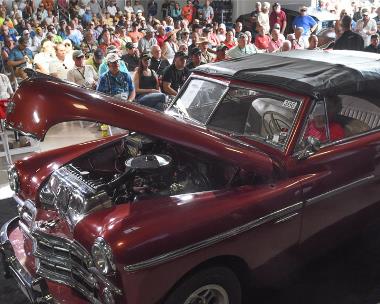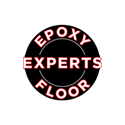Back in the day, major automakers would build and sell the majority of their vehicles in America, with a smattering of sales overseas. That is no long
…
Back in the day, major automakers would build and sell the majority of their vehicles in America, with a smattering of sales overseas. That is no longer true for all vehicles. Case in point: the Buick Envision, a midsize crossover that was built and FIRST sold in China in 2014, and didn’t come to the U.S. until 2016. Last year. Buick sold 40,000 Envisions in America, and 236,000 in China.
With more American sales in mind, and still only three years into its first American generation, Envision has undergone a big-time freshening for 2019. With new design, performance and tech features, the semi-luxury sports-ute features new sculpted front and rear fascias and new grille design; lighting upgrades across all trims; new LED taillamps; new 18- and 19-inch wheel designs; engine stop/start deactivation switch — a Buick-first in North America; single-rate brake booster for improved overall brake performance that requires less effort; flexibility to switch between Adaptive Cruise Control and conventional Cruise Control; enhanced visibility on Rear Vision Camera; improved hands-free microphone for better call quality and better voice recognition; a quicker-warming seat heating system; and a new exterior color: Satin Steel Gray Metallic.
From a power perspective, the 2019 Envision gains increased vehicle performance of 252 horsepower and 295 lb.-ft. of torque with the 2.0-liter turbo engine matched to a 9-speed automatic transmission for quicker acceleration.
In connectivity, the freshening includes next-generation wireless charging with wattage capability for fast and efficient charging including iPhone8/iPhoneX compatibility; and for driver and passenger peace of mind, the cabin also gets an in-vehicle air ionizer that helps eliminate odors, reduce bacteria and provide better air quality.
With a luxury look, Envision comes at you with its sculpted exterior and new winged-tri-shield grille that align with the new face of Buick. Crisp horizontal lines on the front create a more premium look and feel, while redesigned taillamps, reflectors and side markers give the back end a wider and more athletic stance. New optional 19-inch wheels provide an expressive and distinct profile and there are LED wing signature lights on every model. Sizewise, Envision fills the gap between the small Encore and large Enclave and measures 183.7 inches long, 72.4 inches wide and 66.8 inches high on a 108.3-inch wheelbase, and has curbweight of 3755 for FWD and 4083 for the loaded AWD models.
Inside, the changes are thoughtful and driver oriented. Interior design and materials are enhanced and worthy of the entry-level luxury car niche. Premium lighting technology is featured on every 2019 Envision. HID headlamps with LED Buick signature lighting come standard, with the enhanced performance of bi-functional LED headlamps standard on the top two trims. The seats are comfortable, supportive and well-cushioned; the cabin is Buick-quiet on the highway, and the suspension makes for a smooth highway ride. Visibility is good up front, but sightlines in the rear are slightly obstructed by the roof shoulders. Roomy for the segment, the Envision cabin affords 40 inches of front headroom with 38.5 in row tow; legroom is 40.9 and 37.5; and shoulder room is measured at 57 inches up front and 55.8 in the rear
Envision offers two engine choices: The 2.5-liter 1-4 is rated at 197hp and 192 lb-ft of torque, and gets 29 highway and 22/city; and the 2.0-liter turbo is good for 252 hp and 295 lb-ft and is EPA-rated at 25mph/highway and 20mpg/city. I drove the turbo and averaged 20.3mpg on wintry roads.
Acceleration is predictable and responsive, and in track tests, I managed a zero-to-60mph sprint in 6.8 seconds during a 15.4-second quarter-mile. Handling was niche-expected, with slight top wobble during S-curves, and some sway and understeer during quick maneuvers.
Attending to safety, the Envision provides 10 standard air bags, including side-curtain and knee air bags; standard rear-vision camera with Rear Park Assist; tire fill alert and standard safety-belt pretensioners and load-limiters. The Premium trims also get standard Safety Alert Seat; Forward Collision Alert and Following Distance Indicator; Side Blind Zone Alert with Lane Change Alert; Lane Keep Assist with Lane Departure Warning and Rear Cross Traffic Alert. The Driver Confidence Package is available on Premium II and includes Adaptive Cruise Control, Surround Vision and Front Automatic Braking.
The 2019 Buick Envision starts at $33,190 for the 1SV trim; $34,695 for the Preferred model that adds a Hands-Free Power Liftgate, Rear Park Assist, Rear Vision Camera and Smartphone Connectivity; $36,995 for the Essence trim with Rear Cross Traffic Alert, Perforated Leather-Appointed Seating, Heated, Leather-Wrapped Steering Wheel and Heated Rear Outboard Seating; $41,895 for the Premium trim I tested, that added the 2.0L Turbo engine, Forward Collision Alert, Lane Keep Assist w/Lane Departure Warning and Bose® Premium 7-Speaker System. The top trim is the Premium II for $44,795, with Automatic Parking Assist, Buick Infotainment with Navigation, Heated and Cooled Front Seats and Head-Up Display. My Premium trim Envision in AWD added Galaxy Silver Metallic paint for $495 and was mated to an Ebony, perforated leather interior; the Road Trip Package with all-weather floor mats and roof rack rails added $370; a Panoramic Power Moonroof added $1495; front and rear splash guards added $270; body-color molded assist steps added $790; and destination and freight was $1195. Local discounts were $2000 when I inquired, so check with your dealer, but my sticker came in at $42,945.
Visit www.CarlisleEvents.com for more on the automotive hobby.
Mike Blake, former editor of KIT CAR magazine, joined Carlisle Events as senior automotive journalist in 2004. He's been a "car guy" since the 1960s and has been writing professionally for about 30 years.














